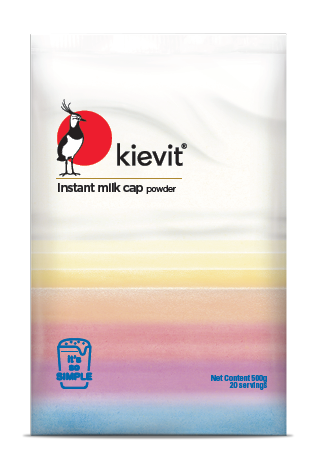For food and beverage companies, understanding the impact of trends on business is vital in their decision-making, whether it be spending on product development or expansion. Because some F&B trends are fleeting, knowing when and where to invest in may not come easy for many companies. In this interview, Anneke van de Geijn, Global Marketing Director at FrieslandCampina shares some insights taken from the company’s extensive market analysis.

Anneke van de Geijn, Global Marketing Director, FrieslandCampina (Photo: FrieslandCampina)
First of all, Ms van de Geijn, you’ve worked in different departments of FrieslandCampina. What has this taught you about the food & beverage market over the years?
I have worked in both B2B(2C) and B2C and in both, it is important to always understand what problem you are solving in the market. In both – B2B and B2C – it starts with understanding the needs, wants, drivers and pain points of the end-consumer.
Working in Development – where as well as getting to know the products in detail, I have learned a lot about sensory aspects - has taught me about the importance of the total sensory experience: experiences should engage all the senses in a positive and balanced way.
Being at the interface of Development and Marketing has taught me the importance of the ‘total wow’: everything abounds a product – expectations, presentation, packaging, messaging, taste, smell, sound, texture and look & feel have to meet consumer needs in a mutually consistent way.
One of the topics I was immersed while working in Research was the personalisation of food and drinks, tailoured to the specific needs of an individual.
In Production – as well as operational excellence – I have learned the importance of a constant and uncompromising focus on safety and quality in food production.
What I’ve realised is that if everyone works together and pools their expertise, we can achieve so much more. Having worked across different departments, I can see how hard it is to marry consumer demand with what is technically feasible. But I’ve also seen that with a combination of anticipating the newest trends, focusing on getting close to the end customer, and the ability to understand the way each department works, have given me the capacity to pull all these aspects together and give our customers a combination of unique products and customer support like no other.
What are your observations of the global food and beverage sector, and the Asian market in particular?
At FrieslandCampina Food & Beverages, we have been doing a lot of work recently in looking at the trends driving the F&B sector globally. In 2019, we published our first ‘Trend Booklet’ – a series of insights from some big data analysis of consumers’ online behaviour. This was merged with market insights from our own experts – people with a wealth of experience in ingredients, in development, in local markets, in R&D, in marketing and in applications – plus market research that we either bought in or conducted ourselves.
We identified three mains trends driving the global market:
- Experiences engaging all senses - consumers are no longer satisfied with a great taste – they want the look, feel, smell and sound to go with it!
- Conscious indulgence – health promises on the label are all-important – but the product still has to taste great
- Personalise it yourself conveniently – Instagram-savvy millennials want to add their own signature to the food and drink they post on social media
All these trends are apparent in the Asian market.
On the positive side, it’s easy for people to share their favourite food and drink ideas online in an instant Instagram – and so for manufacturers to track what’s trending. On the downside, trying to keep pace with latest trends when faced with the challenges of developing new products to bring to market quickly enough to cater to these trends is not always easy.
A further positive is that food and drinks in one country are just a mouse-click away for consumers at the other side of the world, meaning that global trends can easily come about nowadays. However, we observe that although consumers are indeed keen to adopt global trends, they want them with a local twist. So, the food and beverages landscape is at the same time becoming more fragmented and there are no ‘one size fits all’ solutions. Addressing the latest trends while considering local and regional culture and preferences, and creating market success, will be a challenge for manufacturers.
Which trends are mostly likely to impact Asian manufacturers in 2020?
We see all the mega-trends we identified in our research impacting Asian manufacturers – in fact manufacturers, and particularly the foodservice chains in this region, often lead the way. Bubble tea, cheese tea, and fruit drinks with toppings ranging from syrup and sprinkles to jelly and even red kidney beans are innovations little known outside of the region, yet sure to gain in popularity. In fact, for tea and coffee, the trends originating in Asia that are impacting the rest of the world!
Having said that, how is Friesland prepared for this? Do you have input for Southeast Asian markets?
We look of course at our customers and what they need to meet their market demands. Our latest innovation is an instant milk cap powder for foodservice professionals that makes creating a milk cap on beverages extremely quick and easy. Cheese tea or milk cap tea is enormously popular among consumers. Foodservice professionals want instant, hassle-free solutions to make a milk cap – with our new ingredient, foodservice outlets can simply add water or milk to an instant powder and stir with a spoon to create a stable foam that requires no specialist machinery. Once prepared, the topping can be chilled or refrigerated until it’s required. Besides ease-of-use, another key benefit of the new Kievit Instant Milk Cap Powder is its versatility: the powder creates an indulgent top foam on hot or cold tea, coffee, fruit, and many other drinks, plus it can be combined with many different toppings.

Kievit Instant Milk Cap Powder creates an indulgent top foam on hot or cold drinks
Many companies think twice before reformulating products. What kind of support does FrieslandCampina provide them?
We fully understand this cautious approach to changing what might already be a winning formula. At the same time, we know that constant innovation is the only way to stay ahead of the competition in what is a fast-moving industry. It’s difficult for manufacturers because new trends can disappear as quickly as they came, so committing huge investment into something that may or may not last is a tough decision.
We support our customers by very closely monitoring upcoming trends in their markets – for example our unique listening programme analyses online chatter to see what consumers are excited about. Focus Group discussions help us to identify needs further, and we also conduct our unique, so-called ‘landscaping studies’ to analyse the gaps in local markets. In these studies, we look into consumer (sensorial) preferences and benchmark these against the current offerings on the market. This way, we help our customers to reach well-informed decisions on what to launch or to replace and what to retain.
So ultimately, we make it easy for our customers to make decisions by providing an additional perspective with our studies, and providing a safety net of innovative, versatile ingredients backed by local expertise.
In terms of time to market, our ‘innovations kitchens’ in China, the Philippines and Indonesia see experts from different departments, including R&D, marketing and sales, working closely with our customers to tap into the latest trends.
-By Marijo Gonzalez














